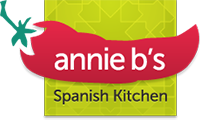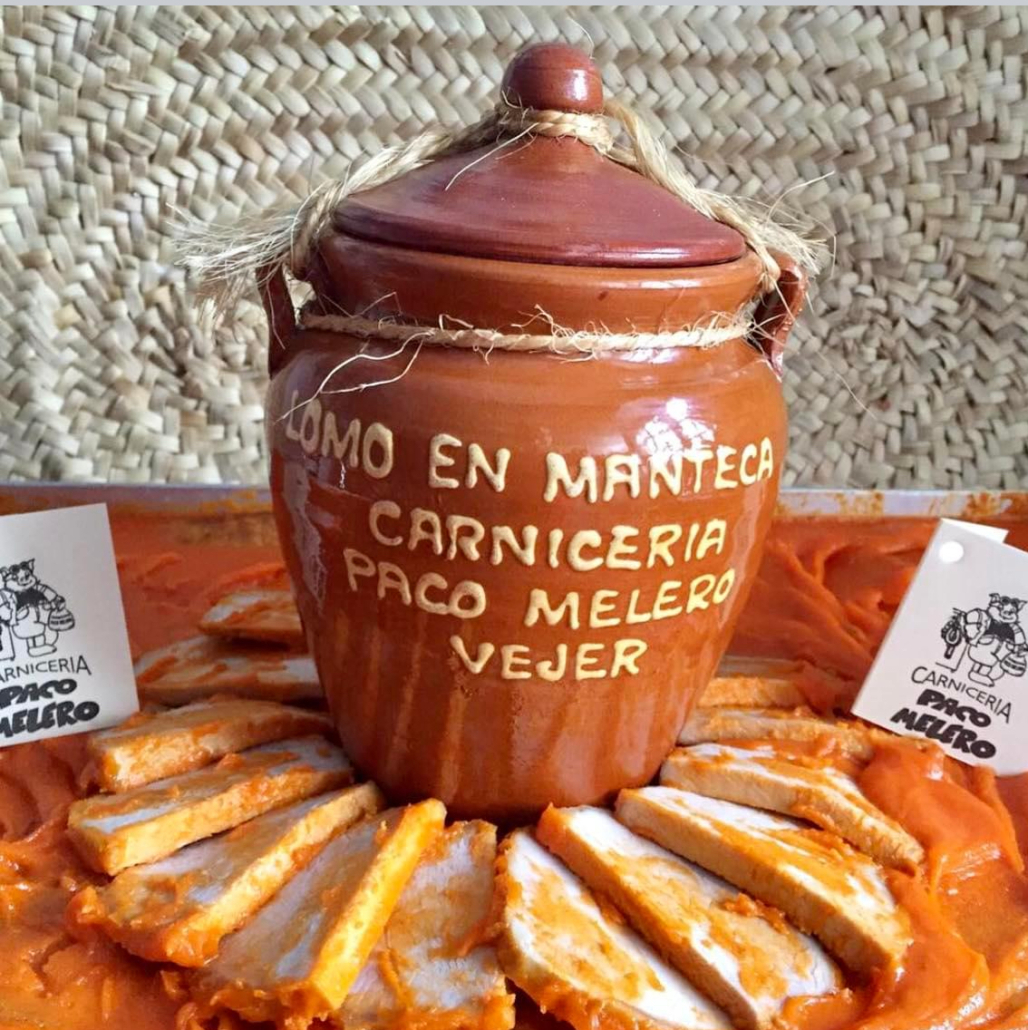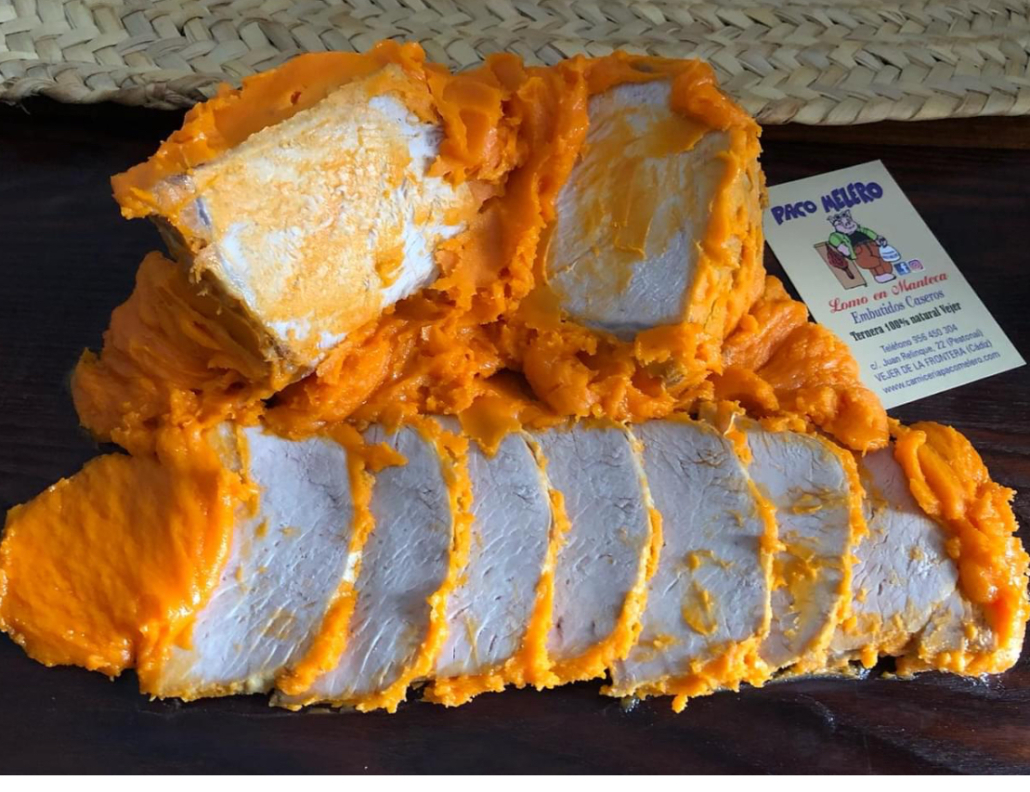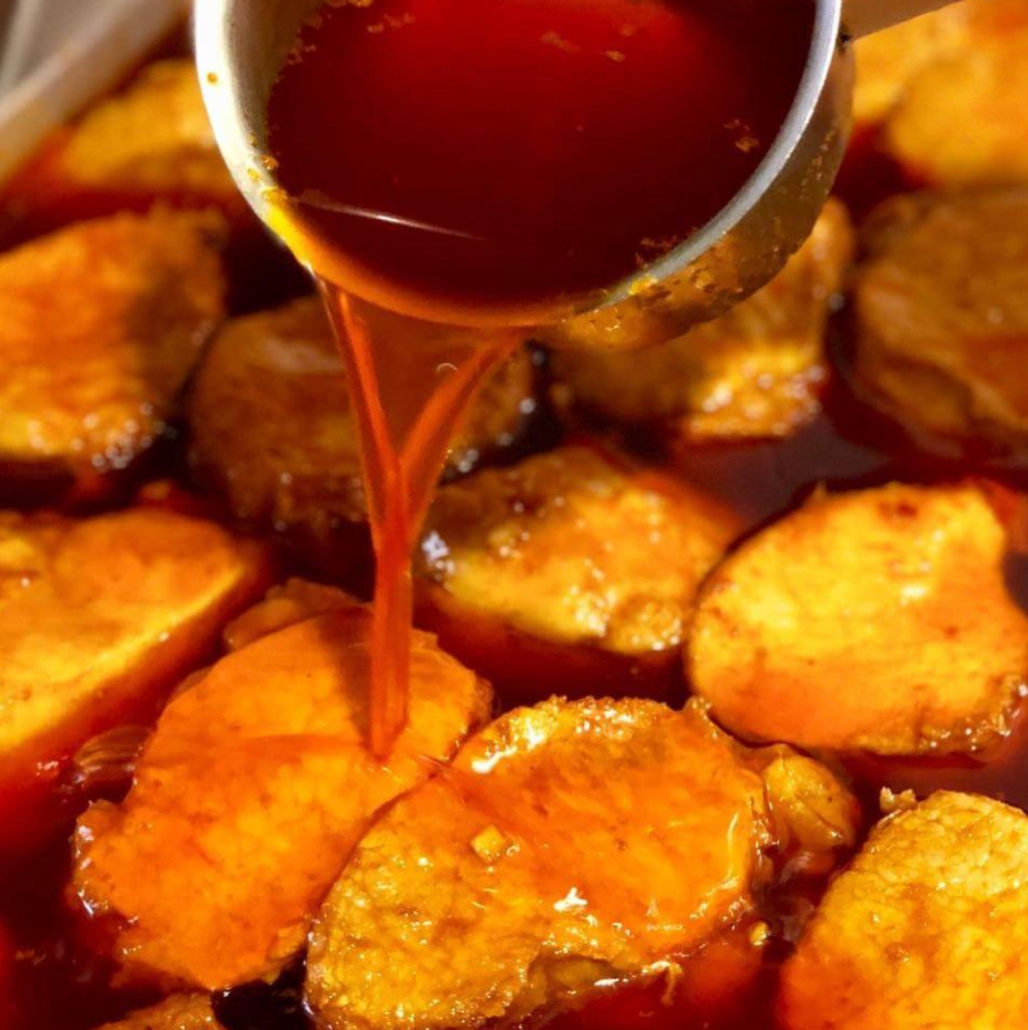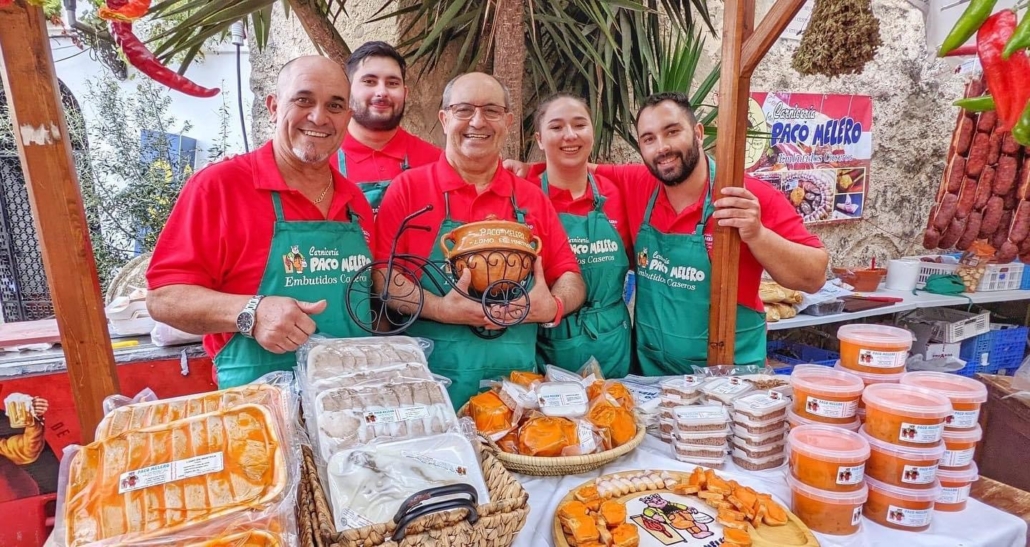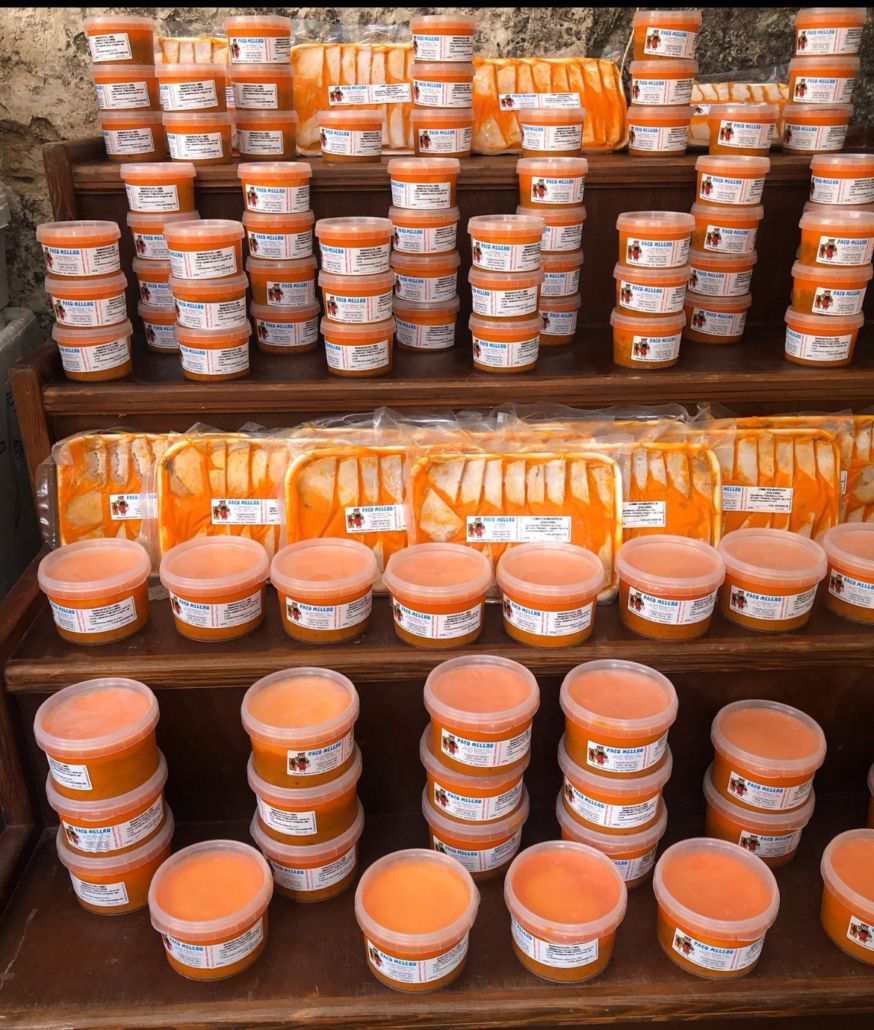Understanding the Essence:
At its core, lomo en manteca is pork loin simmered and then preserved in seasoned manteca (pork fat). The loins of pork are typically simmered in manteca Iberica with dried red peppers, dried wild oregano, garlic, and salt. This process imbues the meat with a deep, savoury flavour and a melt-in-your-mouth texture. Once cooked, the pork meat is either sliced or kept whole then covered with the liquid manteca to preserve it. Every pocket of air is filled with the luscious orange (the colour comes form the dried red peppers) manteca, thus eliminating any oxygen. The addition of the word IBERICA alongside manteca means that the fat used is from the Iberian pig. This is the pig that lives on a diet of Omega 3 infused acorns. This is, believe it or not, a healthy and sought after fat.
A Culinary Heritage:
Lomo en Manteca is more than just a dish; it’s a testament to the resourcefulness of the Andalusian people. Traditionally, pigs were a vital source of sustenance, and every part of the animal was utilized. Lard, a shelf-stable fat, served as a natural preservative, allowing families to store meat for long periods. The same technique is used for preserving cooked tuna too. Traditionally, before the arrival of refrigeration, tuna and pork were stored in clay pots/amphors, submerged in manteca.
During cooking, bits of pork fall off the loin and land at the bottom of the pan. They are scraped up and put into a dish, then covered with manteca to give you manteca colorá. This is the traditional local breakfast when spread on a large slice of toasted country bread. Divine!
